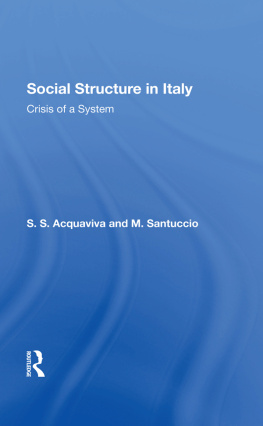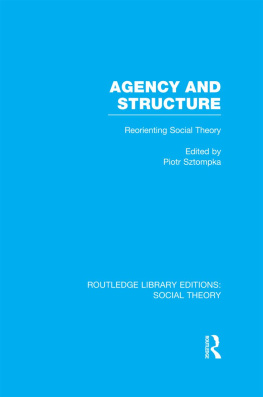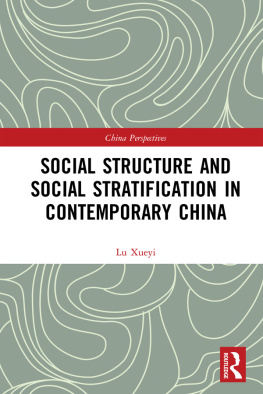Social Structure in Italy
Crisis of a System
This book demonstrates that twentieth century social stratification and the distribution of political and economic power in Italy cannot be properly understood without carefully analyzing the historical dynamics of the development of Italian society. This analysis is also needed to explain the woeful economic, and governmental and administrative performance of the strata that finally reached the levers of power. The Italian society and social and political system are in a crisis: development is uneven and the bureaucratic structures are in shambles. The roots of this crisis lie in the endemic underdevelopment typical of the second half of the nineteenth century. Clearly, they cannot be attributed to the historic failures of Fascism, Democracy, Catholicism or Marxism in Italy, but they are the outcome of a long history of underdevelopment followed by extremely uneven regional evolution leading to tremendous cleavages between ultra-modern and utterly antiquated phenomena, the juxtaposition of flexibility and rigidity, of optimistic enthusiasm and hidebound traditionalism, of extreme wealth and abysmal poverty, of high and low levels of earnings, and of a maladjusted, ill-functioning, uneasy combination of agricultural, industrial, and post-industrial society. All this is aggravated by the crisis in the church and by the North-South situation in which many millions of people have migrated from the South to the North, and by the ensuing struggle between a mass of lumpen proletarians and proletarian immigrants from the South, who are exploited as a work force for the industrial development of the North.
Mario Santuccio holds a law degree from the University of Ferrara and is Professor of Sociology at the Dept, of Psychology at the University of Padua. He is Director of Research on the Organization and Social Dimension of Scientific Research in Italy, a project of the Italian National Council of Research. Sabino S. Acquaviva is one of Italys most distinguished social scientists. He holds a law degree from the University of Padua and taught at the Universities of Trento and Nice. He is now Professor of Sociology at the University of Padua. He is the author of thirteen books.
First published 1976 by Westview Press
Published 2019 by Routledge
52 Vanderbilt Avenue, New York, NY 10017
2 Park Square, Milton Park, Abingdon, Oxon OX14 4RN
Routledge is an imprint of the Taylor & Francis Group, an informa business
Copyright 1976 Italian version S. S. Acquaviva and M. Santuccio
All rights reserved. No part of this book may be reprinted or reproduced or utilised in any form or by any electronic, mechanical, or other means, now known or hereafter invented, including photocopying and recording, or in any information storage or retrieval system, without permission in writing from the publishers.
Notice:
Product or corporate names may be trademarks or registered trademarks, and are used only for identification and explanation without intent to infringe.
Library of Congress Cataloging in Publication Data
Acquaviva, Sabino S
Social structure in Italy.
Bibliography: p.
Includes index.
1. Italy Social conditions.2. Social classes Italy
History.3. Italy Economic conditions.4. Social
institutions Italy.5. Italy Politics and government.
I. Santuccio, Mario, joint author. II. Title.
HN47S.A6 309.145 76-13602
ISBN 13: 978-0-367-28767-2 (hbk)
In addition to a table of contents we have provided an analytical summary of the argument While the main body of the work reproduces all the headings and sub-headings contained in the table of contents, references to the more detailed analytical summary consist simply of bold numerals. These serve to break down our line of argument into all its main individual steps, however small, so that the reader can more easily appreciate their logical place in the lay-out of the book as a whole. This should make it easier to understand what we are trying to say, and may prove particularly helpful to students using it as a text.
In writing this book each author has made himself responsible for the sections more closely relating to his own particular interests. Mario Santuccio has dealt with emigration (pp. 3135), the lower middle and lower social strata (pp. 6680), education (pp. 14957), the Christian Democrat and Italian Communist parties and the trade unions (pp. 180200). Sabino Acquaviva has written the remainder of the work. However, the general line of the argument results from prolonged mutual discussions that have resulted in a broad measure of agreement on most questions at issue; the differences of opinion that remain will be clear enough to the attentive reader.
Full references to other sources will be found in the general bibliography at the end of the book. In the notes, references will usually be of the form Salierno, 1973, corresponding to the entry Salierno G. (1973) Il sottoproletariato in Italia , Roma, Samon e Savelli.
We are especially grateful to Dr Leslie Sklair of the London School of Economics, and to Professors I. De Sandre, G. Guizzardi, and G. Sarpellon, who lecture in the University of Padua on sociology, the sociology of knowledge and economic sociology respectively; they have all read our work in manuscript and put forward useful suggestions and observations.
Introduction
1. Purpose behind this study. 2. Both the crisis within and the structure of Italian society have historical origins. 3. The three phases leading up to the present crisis: underdevelopment (18601900), slow development (19001948), rapid development (19481972). 4. Underdevelopment, male-dominated family groupings and a closed value-system in the first phase. 5. A liberal-minded ruling-class and the beginnings of change: a socio-economic two-way split with the South colonized by the North. The new power-system. 6. The beginnings of development The primitive accumulation of capital, and its social and cultural implications. The new value-system from liberalism to fascism: the broadening of the gulf between North and South. 7. First signs of rapid development: concluding remarks about the historical background to the present-day structure of Italian society and the crisis facing the system.
Part one: Vertical and horizontal structures in Italian society
1. Theoretical models to explain the structure of Italian society and the crisis within it: (a) a model of the structure, (b) two models in conflict development and underdevelopment, (c) a model of the power-system. 2. The vertical structure: how GNP is distributed between the different sectors a dynamic structure. 3. The two-way split in the vertical structure: the difference between North and South. How this dualism is partly superseded by imbalances of another sort 4. Distribution of the active population: its overall decrease and the reserve labour force. The evolution of the vertical structure. 5. The place of emigration. Proportions of this phenomenon and its social and cultural implications. The rate of emigration as it affects the various sectors. 6. Conclusions and a theoretical model for the evolution of the vertical structure. 7. The horizontal structure: the thinking behind a stratification based on relationships to the means of production. 8. Other factors that help to differentiate between strata: the way in which the relationship to the means of production is developed; the way in which incomes are obtained; level of earnings; bargaining power (political, the strength of skilled labour); position within the organization; employment in the public or private sector; extent to which there is a division of labour and the form this takes; further factors. 9. The strata derived from the foregoing considerations: some definitions. Upper stratum, upper middle stratum, lower middle stratum, lower stratum. 10. The strata in reality. 11. Quantitative considerations. 12. Typical features of the different strata: (a) the upper stratum the old and new capitalist ruling-class, the average entrepreneurs among the bourgeoisie, the state bureaucrats, the cultural lite, other adherents; (b) the upper middle statum it partly coincides with the corporate structures of the ceti and the bureaucracies, other categories in this stratum, its increase in size and power; (c) the lower middle stratum consisting mainly of workers, with characteristics closely dependent on the speed with which and the way in which Italian industry has developed changes within this stratum; (d) the lower stratum the traditional lumpenproletariat in an underdeveloped country and its modern counterpart, the marginal labour force, women, pensioners, and others belonging to the reserve labour force. 13. Concluding remarks: the more recent socio-cultural changes and their repercussions within the class-system and the ceti. Different customs and a new style of collective behaviour. The evolution of the average ceti and the levelling-down process within them. The socio-cultural melting-pot as a catalyst of further change.









